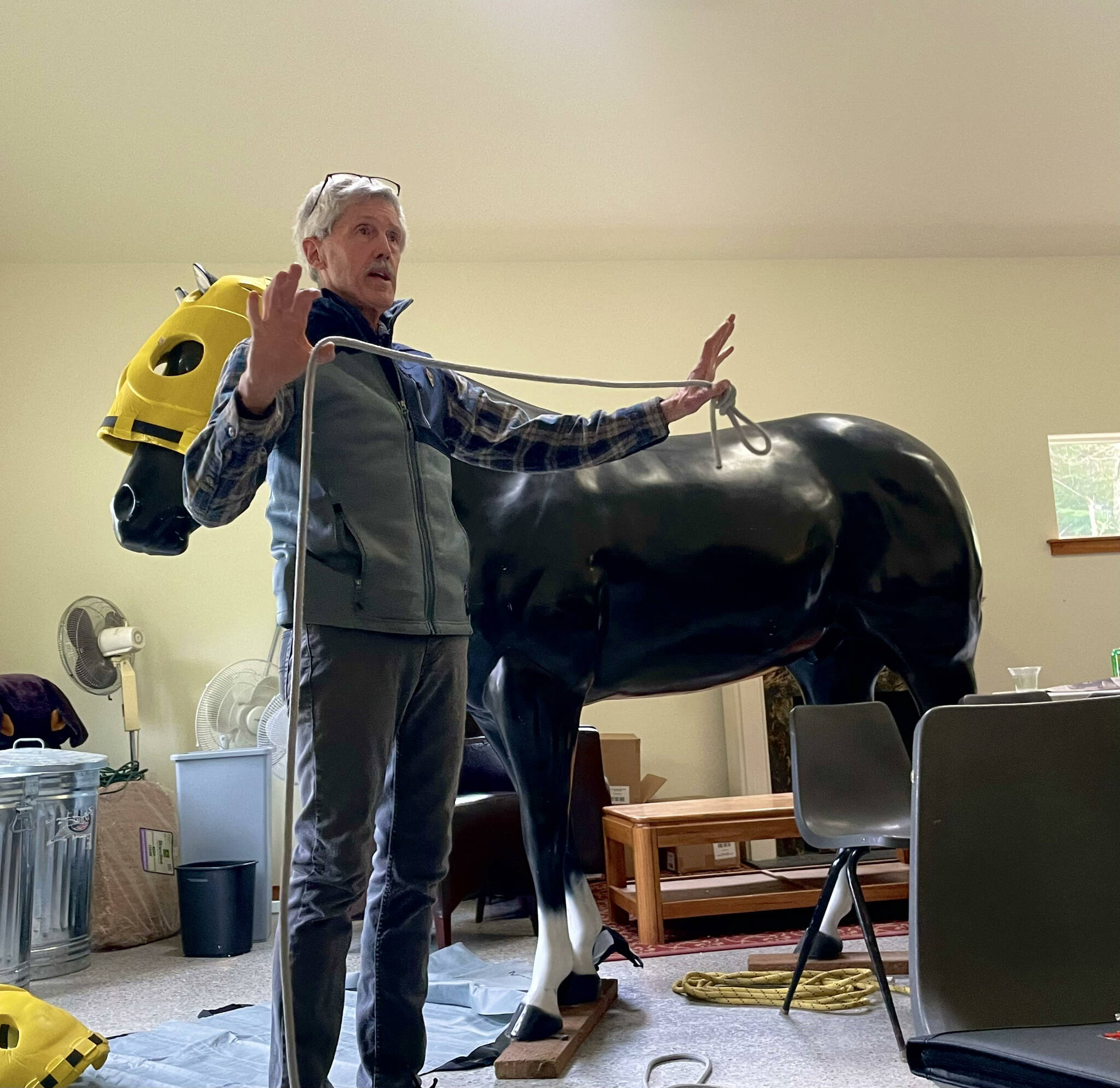Two years ago, responders from North Whidbey Fire and Rescue, Island County Public Works and concerned citizens rescued a horse that had fallen into an old well near Highway 20 and Monkey Hill Road.
The horse, Blaze, had stepped over rotten wood covering it, and he landed 20 feet below on his hind legs.
A tripod structure from the Navy Region Northwest Search and Rescue became very helpful, but it was only graded up to a few hundred pounds. Eventually the makeshift response team needed more — an excavator, vertical lift straps, j-hooks —and the horse made it out unscathed.
“I looked at that horse, I could not find one single mark or blood spot,” said Jerry Lloyd, Whidbey horseman, “so the horse was lucky to say the least, but it takes a village.”
Now, Animal Advocates of Island County are assembling a large animal rescue response team, as state resources are over an hour away. In an emergency, a matter of minutes can make the difference.
“This county has hundreds of old wells hand-dug in the late 1800s and who knows how many septic tanks, so we are at risk, you bet your ass,” Lloyd said at a recent advocacy meeting.
It doesn’t even take large holes in the ground, said Donna DeBonis, co-founder of the advocacy group. Many times, horses are found with major injuries and it’s hard to tell how they got them.
“Horses do that,” she said. “They should be wrapped in bubble wrap.”
Because of this, the most common example is horses, but the rescue process is the same for other large animals such as cattle.
Debonis led attendees through five real-life scenarios: a horse falling into an old septic tank; a horse falling into a ditch; a horse falling into a canal and fighting the current; a blind horse falling into a ravine and a tree toppling over; and a horse trailer tipping on the highway.
All of these scenarios are time sensitive, either under risk of drowning, in a high-risk area or in a harmful position; a horse on its back causes poor circulation, which can lead to muscle problems.
In nearly every scenario, a large machine and straps were required to physically lift the horse out. The advocates are creating a list of volunteers with such machines.
The first thing someone should do in an emergency is remain calm, Lloyd said. How a human reacts can determine how the horse reacts, and this can make or break their survival.
“To rescue a horse, you need to be the happiest, less stressed person on the planet,” he said.
Next, make the horse calm. Provide water and as much comfort as possible, as what comes next can be stressful.
Lloyd has stockpiled equipment for such an emergency, including glides: large plastic, toboggan-like sheets the straps grab onto. That goes beneath the horse and something large like an excavator pulls the straps.
“To get a horse on one of these, the thing you want to stay the hell away from is these legs,” Lloyd said. “There is a zone right there, you’re gonna get your knee busted if you step in that zone.”
DeBonis hopes to solidify a contact list of people with local resources.
“Those horses were seriously depleted as time went on, and so the goal is to get things to move very quickly rather than wait for the Washington rescue team,” she said. “They can be anywhere and take hours, and it would be too late.”
While there is high risk and lots of rural space on Whibdey, with a dedicated team there is hope, Lloyd said.
“(Blaze) demonstrated how a lot of different people with different skills come together in these things, and bada-boom, bada-bing, the horse is saved,” he said.
The next large animal rescue training will be held at the Washington State Animal Response Team facility in Ravensdale on June 15.



